Glacier Points in Halibut Cove, Alaska
Jul 25, 2014
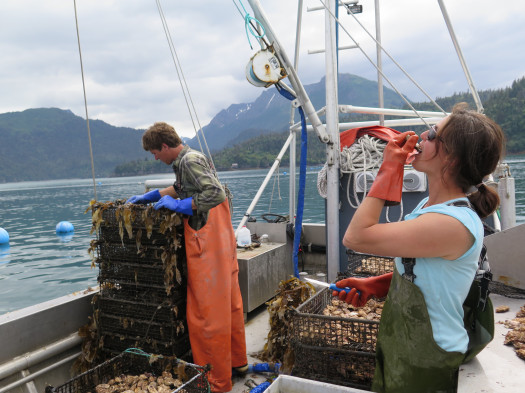
Bottoms up!
Kachemak Bay is down at the end of the Kenai Peninsula, right on the edge of Cook Inlet and the Gulf of Alaska. Big country.
No water quality issues here. Kachemak Bay is surrounded by Kachemak Bay State Park, where the bears outnumber the people by a factor of about a hundred to one.
Well, I just so happened to find myself in Alaska last week, and just so happened to make my way down to Kachemak Bay to check out Glacier Points, one of the tastiest oysters I’ve yet encoutnered. The oysters are farmed by Greg and Weatherly Bates:
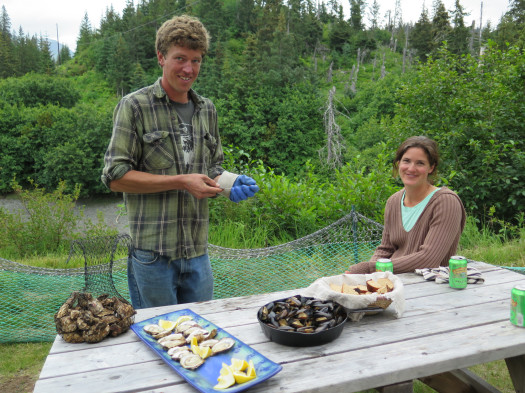
These guys used to farm Georges River oysters in Maine. Six years ago, they lit out for the territories to have an adventure. And they have. They found one of the more perfect spots on the planet. It’s called Halibut Cove, and it has a year-round population of about 15. More in summer, all in rustic houses on huge pilings (30-foot tides) surrounding said cove, which gives the whole place a Robert-McCloskey-comes-to-Alaska kind of vibe. Ten-year-olds rowing across the cove to pick up the mail at the country’s only floating post office. That kind of thing.
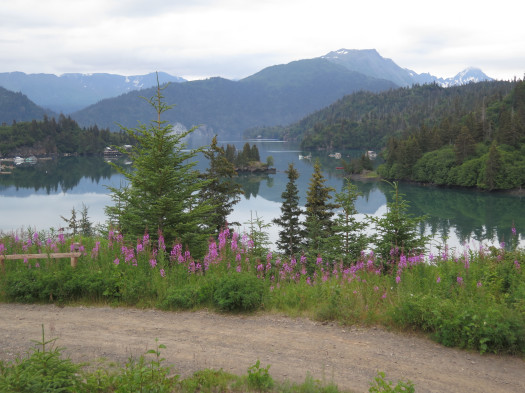
But, this being Alaska, certain things happen that don’t happen in Maine. Weatherly plugged her first bear when she was nine months pregnant and has kept the freezer stocked with bruin meat ever since. Greg occasionally wrestles salmon sharks to the beach when they creep too close to shore. And just before I arrived, Weatherly and the kids were towed around Halibut Cove in their skiff by a giant sockeye salmon.
Their oyster farm is on the edge of the cove, near Glacier Spit, which was the inspiration for their name. (They thought the “spit” part might be problematic.) The massive Grewingk Glacier towers above them. And sea otters play all day around the cages, including one Greg has named Fat Rat, who looks like he’s just itching to get his mitts on their shellfish. (The otters are, in fact, doing so well that they’ve virtually cleaned out Halibut Cove’s clam population.)
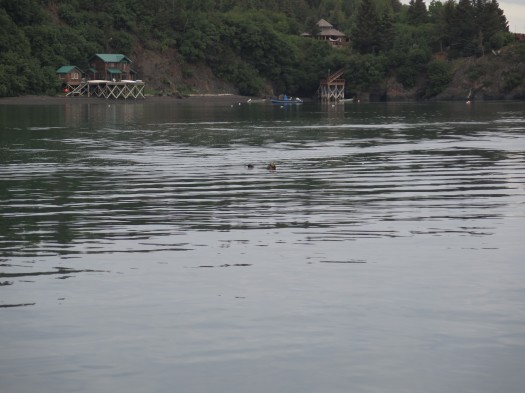
The oysters are grown in suspended trays and tumbled to strengthen their shells. Greg and Weatherly are producing about 300,000 a year, which makes them the most successful Alaska oyster farmers of all time. Most people who try oysters in Alaska burn out pretty fast, but Greg is gunning for a million a year and shows no sign of flagging. PLus his oysters are sensational. Take a look at them:
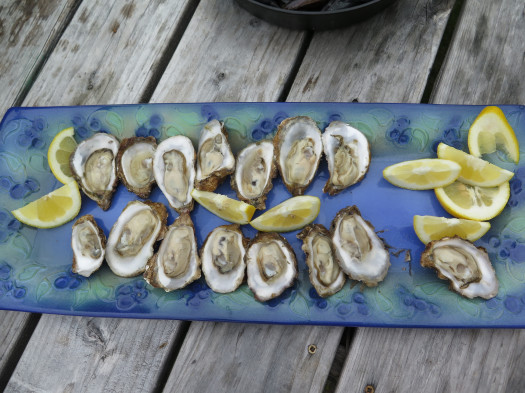
Is it just me, or do they look a little more Eastern than your typical Pacifics? A little more khaki, and with a little less of the dark rim you see on Pacifics? WHatever the case, they definitely have more of that umami brine than almost any Pacifics I’ve tasted, and less of the cucumbery flavors you see in Washington State oysters. There’s definitely a touch of king salmon in them. All in all, great oysters. You can find them all over Homer’s restaurants (best dining scene in Alaska), in Anchorage, at Hog Island Oyster Bar in San Francisco, and, surprisingly, throughout the Northeast, thanks to distribution by Pangaea Shellfish. Next they plan on conquering the West and Midwest.
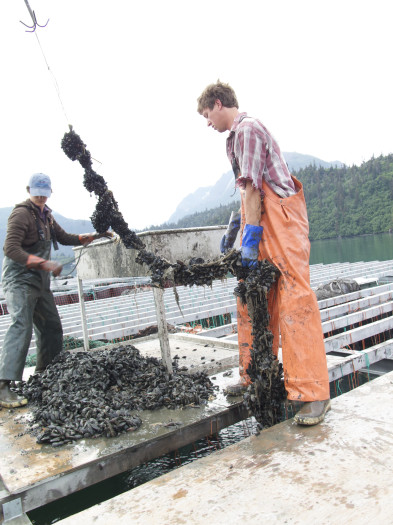
But wait, there’s mussels, too! After several years of watching in annoyance as native mussels set all over his oyster equipment, Greg decided if you can’t beat ’em, join ’em. He now captures the wild mussel set, stuffs the seed into 25-foot-long mesh socks, and hangs them from rafts in Halibut Cove. These are wild Alaskan mussels of a species rarely farmed, and they are super buttery, a spectacular treat for us hunter-gatherer types looking for new thrills. So far, most of these are staying in the Homer-Anchorage region, but who knows? They grow so thick in Halibut Cove, they may soon be turning up in your local seafood joint.
« PREVIOUS: Matanzas Creek Days of Wine & Lavender Oyster Tasting
 Recent Posts
Recent Posts

3 Responses to Glacier Points in Halibut Cove, Alaska